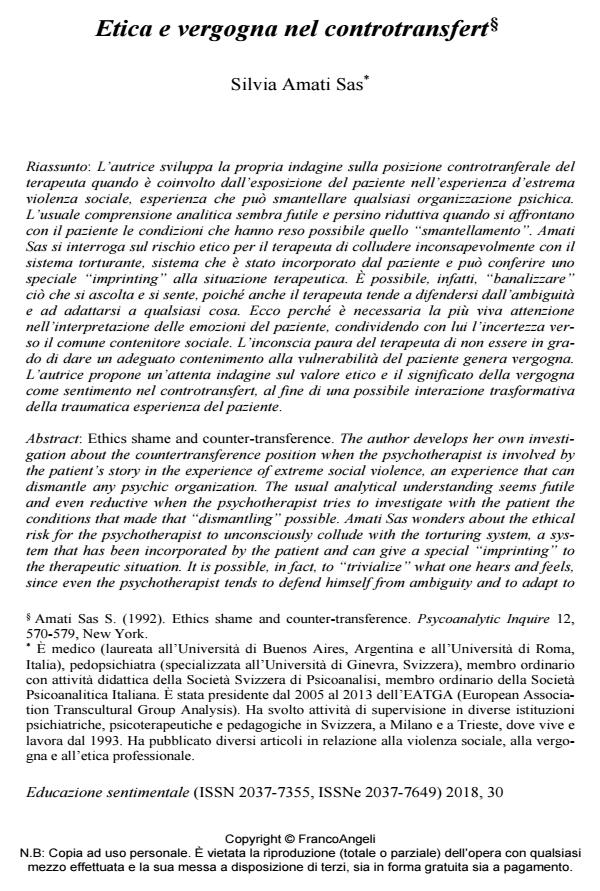Etica e vergogna nel controtransfert
Titolo Rivista EDUCAZIONE SENTIMENTALE
Autori/Curatori Silvia Amati Sas
Anno di pubblicazione 2019 Fascicolo 2018/30
Lingua Italiano Numero pagine 8 P. 9-16 Dimensione file 750 KB
DOI 10.3280/EDS2018-030003
Il DOI è il codice a barre della proprietà intellettuale: per saperne di più
clicca qui
Qui sotto puoi vedere in anteprima la prima pagina di questo articolo.
Se questo articolo ti interessa, lo puoi acquistare (e scaricare in formato pdf) seguendo le facili indicazioni per acquistare il download credit. Acquista Download Credits per scaricare questo Articolo in formato PDF

FrancoAngeli è membro della Publishers International Linking Association, Inc (PILA)associazione indipendente e non profit per facilitare (attraverso i servizi tecnologici implementati da CrossRef.org) l’accesso degli studiosi ai contenuti digitali nelle pubblicazioni professionali e scientifiche
L’autrice sviluppa la propria indagine sulla posizione controtranferale del terapeuta quando è coinvolto dall’esposizione del paziente nell’esperienza d’estrema violenza sociale, esperienza che può smantellare qualsiasi organizzazione psichica. L’usuale comprensione analitica sembra futile e persino riduttiva quando si affrontano con il paziente le condizioni che hanno reso possibile quello "smantellamento". Amati Sas si interroga sul rischio etico per il terapeuta di colludere inconsapevolmente con il sistema torturante, sistema che è stato incorporato dal paziente e può conferire uno speciale "imprinting" alla situazione terapeutica. È possibile, infatti, "banalizzare" ciò che si ascolta e si sente, poiché anche il terapeuta tende a difendersi dall’ambiguità e ad adattarsi a qualsiasi cosa. Ecco perché è necessaria la più viva attenzione nell’interpretazione delle emozioni del paziente, condividendo con lui l’incertezza verso il comune contenitore sociale. L’inconscia paura del terapeuta di non essere in grado di dare un adeguato contenimento alla vulnerabilità del paziente genera vergogna. L’autrice propone un’attenta indagine sul valore etico e il significato della vergogna come sentimento nel controtransfert, al fine di una possibile interazione trasformativa della traumatica esperienza del paziente.
Parole chiave:Morale, etica, controtransfert, transoggettivo, conformismo, ambi-guità, vergogna, diniego.
Silvia Amati Sas, Etica e vergogna nel controtransfert in "EDUCAZIONE SENTIMENTALE" 30/2018, pp 9-16, DOI: 10.3280/EDS2018-030003